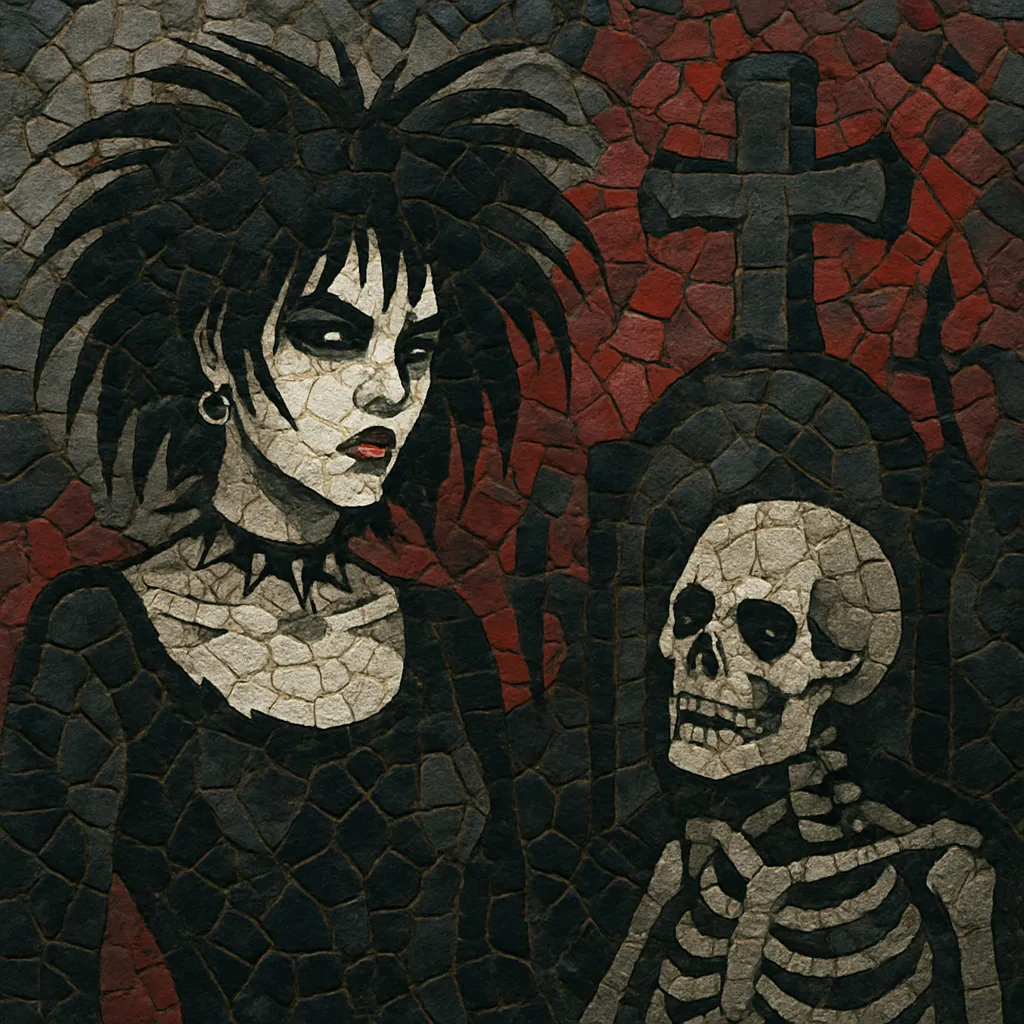Deathrock is a dark, theatrical offshoot of punk that emerged in the early 1980s, characterized by ominous atmospheres, tom-heavy “tribal” drumming, chorus-soaked basslines, and reverb-drenched guitar.
It blends the immediacy and DIY aggressiveness of punk rock with the bleak textures and minor-key melodicism of post-punk and early gothic rock, often drawing visual inspiration from horror cinema and macabre cabaret.
Vocals range from plaintive and haunted to snarling and declamatory, while lyrics explore themes of death, alienation, ritual, and romantic morbidity. The production favors raw edges, spring/plate reverbs, and room ambience over polish.
Deathrock crystallized in the Los Angeles punk underground at the turn of the 1980s, as bands fused the speed and sneer of punk rock with the brooding atmospheres of post-punk and the theatricality of emerging gothic rock. Early flagships included Christian Death, 45 Grave, Kommunity FK, and Super Heroines, whose shows combined funereal aesthetics, horror-film imagery, and minimalist, reverb-heavy sonics. Parallel developments in the UK’s “positive punk” milieu (e.g., UK Decay, Sex Gang Children, Alien Sex Fiend) cross-pollinated with the U.S. scene, reinforcing a shared vocabulary of macabre stagecraft and shadowy tonality.
While closely allied with goth, deathrock kept a distinctly punk backbone: raw recordings, punchy tempos, and a skeletal, bass-forward mix. Drums emphasized tom patterns and sparse cymbals, guitars leaned on chorus, flange, and spring reverb, and vocals veered from dirge-like to frantic. Independent labels, zines, and college radio nurtured the sound, with cult releases like Christian Death’s “Only Theatre of Pain” (1982) becoming touchstones.
After the mid-1980s, deathrock activity waned as goth diversified and industrial and alternative rock gained traction. A late-1990s/early-2000s revival—led by bands such as Cinema Strange and a renewed interest in first-wave L.A. acts—reasserted the style’s core traits and global reach, inspiring new scenes in Europe and the Americas and club nights dedicated to the “batcave/deathrock” continuum.
Deathrock’s enduring influence appears in dark wave and post-punk revivals, as well as in electronic micro-scenes that borrow its haunted ambience and ritual flair. Its DIY ethos, minimal yet dramatic arrangements, and morbid romanticism remain a template for bands seeking a rawer, punk-rooted alternative to polished goth.
-
•
Start with a tom pattern and bass ostinato.
•Add a minor-key guitar figure with chorus and spring reverb.
•Draft lyrics around a central macabre image or ritual scene.
•Track live or “live-ish” for organic bleed; use room mics to capture space.
•Leave intentional rough edges—misty ambience is part of the character.


